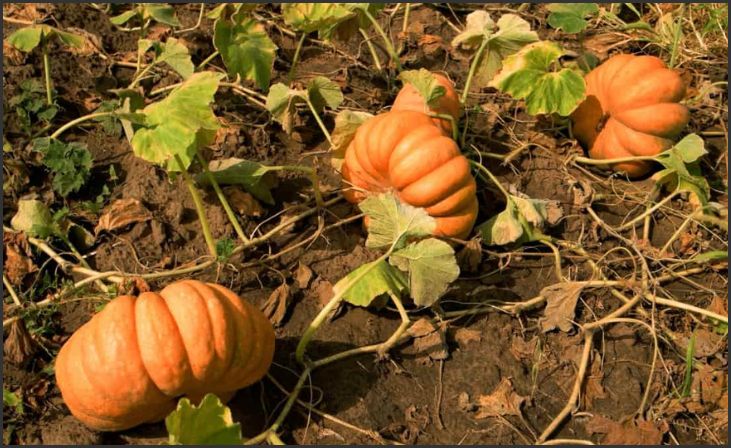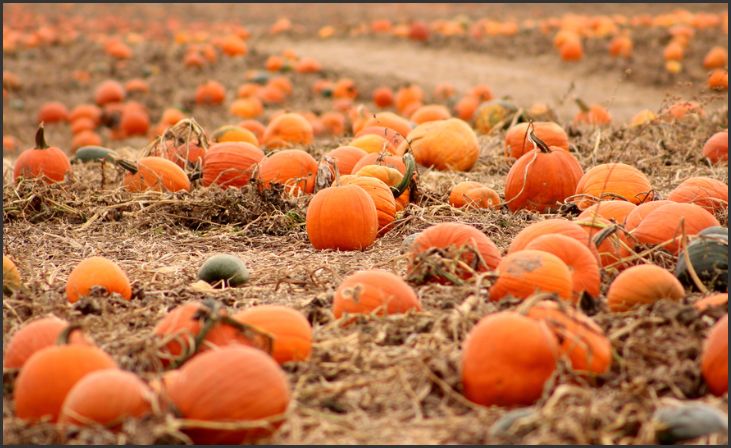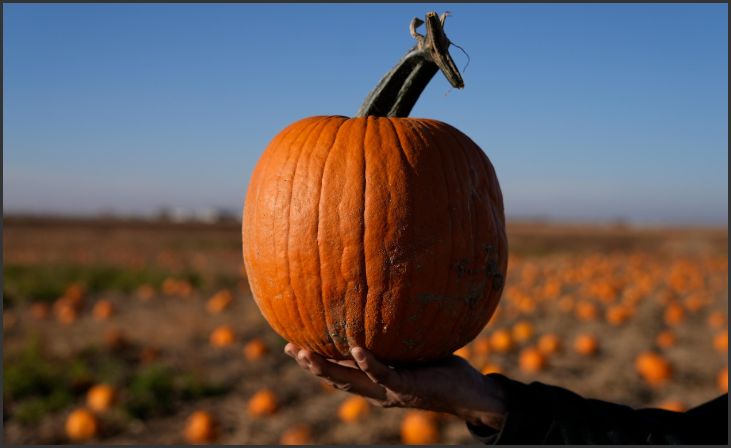Successful Pumpkin Cultivation At Home – Achieving thriving pumpkin cultivation at home is a rewarding endeavor. Begin by selecting a suitable pumpkin variety for your climate and space.
Choose a sunny location with well-draining soil. Prepare the soil by incorporating organic matter and ensuring proper pH levels. Plant pumpkin seeds or seedlings after the last frost date, allowing enough space for vines to spread.
Regular watering is crucial, aiming for consistent moisture without waterlogging. Fertilize with balanced nutrients during the growing season. Mulching around plants helps retain moisture and suppress weeds. Provide support for heavy fruits using slings or trellises.
Monitor for pests and diseases, applying appropriate measures if needed. As the pumpkins develop, consider hand-pollination to enhance fruit set. Harvest once the pumpkins display vibrant color, have a tough rind, and emit a hollow sound when tapped. Successful homegrown pumpkins embody patience, care, and a green thumb’s touch.
Successful Pumpkin Cultivation At Home

Choosing the Right Pumpkin Variety
Selecting the appropriate pumpkin variety is a crucial first step in ensuring a successful home cultivation experience. Factors such as available space, local climate, and the intended use of the pumpkins should influence your choice. Whether you’re aiming for jack-o’-lanterns or delicious pumpkin pies, there’s a perfect variety for every purpose.
Setting Up Your Pumpkin Patch
Before diving into the planting process, it’s essential to establish an ideal location for your pumpkin patch. Consider factors like sunlight exposure and soil quality. Preparing the soil with nutrient-rich compost and ensuring proper spacing between plants will set the stage for robust pumpkin growth.
Also, Read – Organic Pumpkin Farming Practices
Planting Pumpkin Seeds
Timing is everything when it comes to planting pumpkin seeds. Follow a step-by-step guide to ensure your seeds are sown at the right time and depth. Caring for seedlings during their early stages is critical for healthy and vigorous pumpkin plants.
Nutrient Management
Understanding the nutritional needs of pumpkins is key to a thriving harvest. Implement a well-balanced fertilization schedule, incorporating organic products when possible. Nutrient management plays a significant role in the overall health and productivity of your pumpkin plants.
Watering Techniques
Proper watering practices are essential for maintaining healthy pumpkin development. Learn the right amount and frequency of watering, and avoid common mistakes that could jeopardize your harvest. Consistent and adequate hydration is crucial for successful pumpkin cultivation.
Dealing with Pests and Diseases
Identifying and addressing common pests and diseases is a proactive measure to protect your pumpkin plants. Explore natural and organic methods for pest control to maintain a chemical-free growing environment.
Supporting Pumpkin Growth

As your pumpkin vines grow, providing adequate support becomes crucial. Learn how to use supports effectively to prevent damage to vines and support heavy pumpkins. Pruning tips for improved airflow and sunlight exposure will contribute to a thriving pumpkin patch.
Read Also: Best pumpkin carving techniques for beginners
Harvesting Pumpkins
Knowing the signs of readiness is essential for a successful pumpkin harvest. Discover the correct techniques for harvesting without causing damage to the fruit. Harvesting at the right time ensures optimal flavor and longevity.
Preserving Pumpkins
Once harvested, explore various methods for preserving pumpkins. From canning to freezing, there are creative ways to extend the life of your pumpkin harvest. Learn how to make the most out of your homegrown pumpkins.
Success Stories from Home Gardeners
Gain inspiration from real-life success stories of home gardeners who have mastered the art of pumpkin cultivation. Discover their tips, lessons learned, and the joy they’ve experienced in growing pumpkins at home.
Celebrating the Harvest
Beyond the harvest, explore ideas for celebrating your pumpkin bounty. From festive decorations to delicious recipes, make the most of your homegrown pumpkins. Creating a sense of accomplishment is a vital part of the home gardening experience.
Troubleshooting Common Issues
Navigate common challenges that may arise during pumpkin cultivation. Address issues like yellowing leaves and stunted growth with practical tips and solutions. Be prepared to adapt to unexpected weather changes to ensure a successful harvest.
Benefits of Homegrown Pumpkins
Delve into the nutritional advantages of consuming homegrown pumpkins. Understand the environmental and economic benefits of cultivating pumpkins in your own backyard. Embrace the wholesome rewards of home gardening.
Importance of successful pumpkin cultivation at home

Successful pumpkin cultivation at home holds significant importance for several reasons:
Fresh and Nutritious Produce
Homegrown pumpkins offer unmatched freshness and nutritional value. Harvested at their peak, they are rich in vitamins, minerals, and antioxidants, contributing to a healthy diet.
Control Over Chemicals
By cultivating pumpkins at home, you have control over the pesticides and fertilizers used. This enables you to opt for organic or eco-friendly methods, ensuring safer and healthier produce.
Educational Value:
Home gardening, including pumpkinividuals and families. It teaches about plant growth, ecosystems, and the effort required to produce food.
Sustainability
Growing pumpkins at home reduces the need for long-distance transportation, which contributes to lower carbon emissions. It also encourages sustainable practices like composting and water conservation.
Seasonal Tradition
Celebrate the joy of the season with a cherished tradition that brings warmth and togetherness. Whether it’s decking the halls, sharing festive meals, or exchanging heartfelt gifts, these timeless customs create lasting memories. Embrace the spirit of the season, creating moments of happiness and connection with loved ones. Start or continue a seasonal tradition that adds a special touch to the holidays, making them truly magical.
Conclusion
In conclusion, embarking on the journey of successful pumpkin cultivation at home is a gratifying endeavor that intertwines nature, learning, and satisfaction. From meticulous preparation and nurturing to the joy of harvest, the process enriches our connection to the earth and rewards us with nourishing produce, cherished memories, and a deeper understanding of sustainable living. Through dedication and care, the humble pumpkin transforms into a symbol of achievement and the simple pleasures of a well-tended garden.
FAQs
Yes, choose compact varieties and ensure the container has proper drainage.
Water consistently, keeping the soil moist but not waterlogged.
Wait until the soil is warm, typically after the last frost date in your region.
Apply a mixture of water and baking soda as a preventive measure.

Leave a Reply